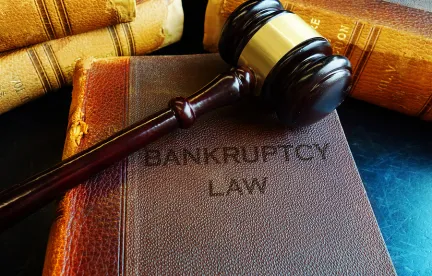In this period of macroeconomic uncertainty, there are a number of key differences between French and US bankruptcy laws that multi-jurisdictional creditors, bidders, and other interested parties should be aware of.
The mechanics for selling a debtor’s business or assets under Section 363 of the US Bankruptcy Code (363) are generally left to the debtor’s business judgment, even though some standard procedures are often employed. For example, an auction process with a stalking horse bidder is common, but not expressly required by the Code.
In contrast, French law provides a precise template for the sale of a business and assets in bankruptcy. Even though it contains some features similar to 363 sales, a French bankruptcy sale has several particularities that reflect the main goal of French bankruptcy law: safeguarding the business in order to protect jobs.
Different Priorities
In France, a bankruptcy proceeding generally only occurs after a failed attempt to complete an out of court workout. By this point, a business’ value has usually already declined significantly and equity stakeholders and creditors are subsequently out of money. This is because the French test for bankruptcy is a cash test—failing to pay debts as they fall due—as opposed to a balance sheet test: value of assets below value of liabilities.
Because the main purpose of a French bankruptcy proceeding is the preservation of jobs, creditors have a small role to play and, often, equity holders are treated more favourably than creditors.
In contrast, in the United States, affording favourable treatment to equity is generally foreclosed by the absolute priority rule, which requires creditors to be paid in full before equity holders can recover on their claims.
The reduced role for French creditors has significant consequences when it comes to bankruptcy sales, including
-
The sale of the business is decided by the court, not the creditors.
-
Creditors cannot credit bid, unlike US secured creditors.
-
The price offered by the bidder is less important than the number of employees the bidder will employ post-sale.
-
Only certain, specific claims can be transferred to the purchaser.
The Bidding Process
US debtors have considerable flexibility when deciding how to structure a sale. When an auction is to be held, the procedures are proposed by the debtor, while creditors and other parties can object. If the bidding procedures are found to be reasonable, the court will approve them and, in many cases, will also approve the debtor’s selection of a stalking horse bidder, bid protections for the stalking horse, and the form of the stalking horse purchase agreement.
French bankruptcy law does not provide for such a mechanism. Instead, the sale process is led by a court appointed administrator (similar to a bankruptcy trustee), and each step is closely supervised by the bankruptcy court.
With respect to timing, a US bankruptcy sale may occur shortly after the filing under 363 or at the end of the case under a plan of reorganisation. Often, timing is determined by reference to “milestones” that are negotiated pre-bankruptcy with lenders or other key constituents as part of a restructuring support agreement, debtor-in-possession loan, or cash collateral agreement.
In France, a typical bankruptcy bidding process takes from four to 16 weeks. This period mainly depends on the cash situation and the amount of negative publicity for the business resulting from the bankruptcy, which may lead to a loss of supplier credit and the loss of customers, depending on the type of business
The main purpose of a French bankruptcy proceeding is the preservation of jobs.
The bidding process is generally initiated once the bankruptcy proceeding is open. However, if the financial situation allows it, and to avoid the negative consequences of a bankruptcy proceeding, the court may agree to a prepackaged sale. In such cases, the debtor will select a preferred bidder in a confidential pre-bankruptcy process and then file for bankruptcy so that a short bidding process against the preferred bid can take place. The court will then name the successful bidder.
The main differences between this process and a typical stalking horse procedure are that bid protections are completely unavailable to the preferred bidder, and its offer may be subject to a significant number of conditions precedent.
Scope and Content of the Offer
In France, when defining the scope and content of an offer, it is important to carefully select the assets, contracts, and rights that may be taken over. These are usually automatically transferred clear of any lien or encumbrance. However, in some instances, there may be restrictions on assignment, e.g., customer contracts must require the approval of the customer, or some liens may survive, such as security interests taken by a creditor in an asset for which it financed the purchase.
In line with the main goal of a French bankruptcy sale being to save jobs, the offer must specify the number of employees to be taken over (by position) and contemplated future hires. Employment agreements are transferred as-is. To improve the quality of the offer, it is also typical to commit to not making redundancy plans for a certain period, often up to two years, unless authorised by the court.
Bidders must also demonstrate their ability to fund the purchase price and the business’ operations, in order to show that it will be in safe hands and continue to provide employment.
Offer Review and Purchaser Selection
In France, once the initial deadline to submit offers has passed, bidders can review competing bids at the clerk’s office of the court, as these are made public.
Once submitted, the bid will be binding until the court issues its ruling. It may only be modified to be improved, usually by increasing the price or number of employees to be taken over. Two working days before the hearing, the bidders submit their second and final offers.
It’s for this reason that bids often include conditions precedent, such as assignability of specific agreements, foreign investment authorisations if applicable, etc. All conditions precedent must be satisfied or waived, at the latest, by the beginning of the hearing, whereas a 363 sale purchase agreement may still contain limited condition precedents when submitted for court approval. This period between the initial offer and the court hearing is critical for negotiating if necessary with third parties, such as customers, lessors, local authorities, other bidders in order to team up, etc.
In the United States, once a 363 auction has concluded, the debtor (sometimes in consultation with the secured lender or official creditors’committee) will submit the “highest and best” bid to the bankruptcy court for approval. Although the debtor may consider points other than price, such as the bidder’s ability to close the sale expeditiously, the price is generally the leading consideration.
US debtors have considerable flexibility when deciding how to structure a sale.
In France, however, the court will select the bid that, under the best conditions, allows for, in order, i) the most employment contracts, ii) the reimbursement of the creditors, and iii) the greatest chances of closing the sale. The price is therefore not the main concern, unless all bidders offer the same terms regarding employment.
In a French proceeding, only the public prosecutor, the debtor, parties to assigned contracts, and the purchaser have a right to appeal. Creditors and the creditor representative have no right at all to object to the sale or to appeal. Challenges are therefore very limited. This contrasts with the US system, where any party in interest may object to a bankruptcy sale.
French bankruptcy law is changing slightly to give more rights to creditors, notably as a result of EU regulation. However, in a sale of a business and its assets, creditors’ rights remain very limited.






 />i
/>i

